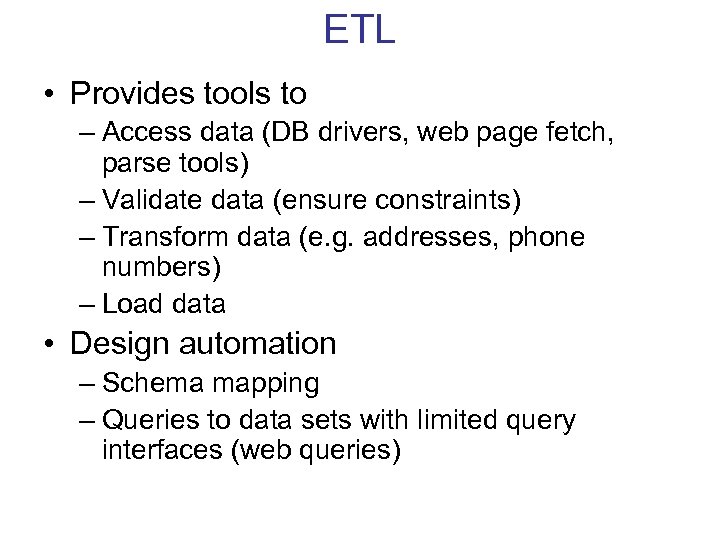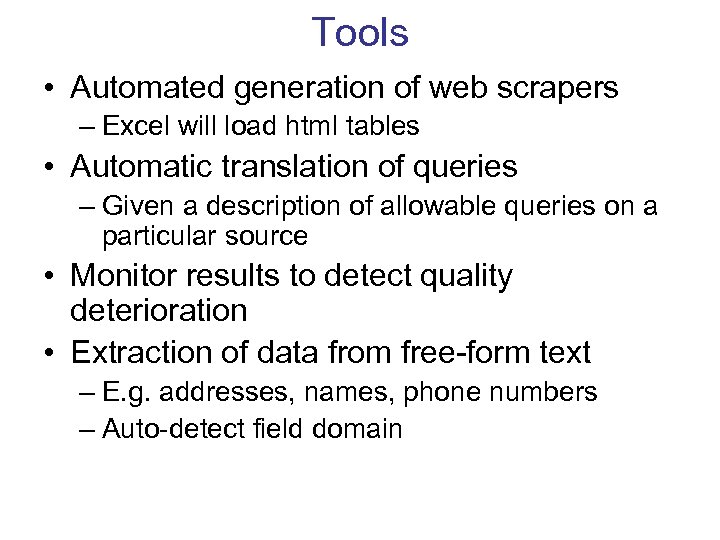Here we will see various sorts of foreach loops for instance the array's components with different varieties of declarations. The first foreach is asserted by listing the array elements/values to the v1 variable by passing from the a1 variable by way of iteration of foreach. The second foreach will print the elements/values of the array with the array index values. The third foreach in the program is made similar to the important thing and value format identical to above. Fourth each in this system is for example multi-dimensional arrays utilizing the foreach perform of PHP. The fifth foreach in this system is to print the dynamic array values. All those applications output shown in the output image beneath intimately. Foreach loop/loops are top-of-the-line methods of offering a straightforward doorway so as to iterate over the array/arrays listed in this system. Foreach loop/construct will problem error/errors when one uses it with variables and different knowledge types/ uninitialized variables/variables. There are two sorts of expressing foreach loop in PHP. Check out beneath for the several varieties of syntax utilization for the foreach loop in PHP. Foreach loop will work only on PHP7, PHP5, PHP4 variations. The following code demonstrates a loop that changes the values in an array. In this code, the array is passed as an argument to the static methods in the class. The array variables are references to an tackle in memory. Since arrays can be very giant, we do not need to copy them when we cross them into methods. When an array is passed as an argument to a method, the name of the array refers to its address in memory. Therefore, any changes to the array within the method will affect the unique array. This is this system to print the precise array components and in addition the array parts that are multiples of 2 of its solely values.
Here the array is directly passed inside the foreach() perform and then array values instantly passing to the value1 variable via iteration of foreach. This is this system to print the array1 elements by passing the array1 values to the value1 directly using iterations of foreach. In the primary foreach current elements are multiplied with 2 but didn't give any output. Then the output will show the array's index values and the precise value saved in the explicit index of an array. You can even use a while loop to loop over an array when you use a model new perform, every . To handle a multiple-item return value from an array, you should use the record perform, which can assign the two return values from each to separate variables. The mysql extension talked about there was deprecated even at the time of the article. That's a problem which even then did not want a code answer. It's a getter which returns a replica as it ought to, one point of encapsulation is to control entry via devoted strategies ... If you should allow modifications, then write a setter and friggin' chain the strategies . The extra you program in PHP, the more you discover yourself utilizing associative arrays as a substitute of numerical ones. Instead of making a numeric array with string values, you probably can create an associative array and place your values as its keys. If you want, you probably can then retailer further information in the element's value. There's no pace penalty for doing this, and PHP preserves the ordering. Plus, trying up or altering a worth is straightforward because you already know the key. A simple way is to run a loop and compare elements one after the other. Java offers a direct method Arrays.equals() to compare two arrays. Actually, there's a list of equals() strategies in the Arrays class for different primitive types (int, char, ..etc) and one for Object sort .
This may be applied in the numeric array where string integer indexing is completed. Here, use the sort() perform to sort array components after which use the equality operator for checking the index of those two arrays utilizing the array operator. The for and foreach are the forms of loops used for the different functions in PHP the place foreach is used for implementing associative arrays and for is used with variables. To sum up rapidly, on this article, you discovered seven completely different methods to convert a string to an array of phrases in PHP. You began with a quick overview on PHP and understood the reasons why it's better to sometimes convert a string to an array. You discovered the 7 totally different methods to convert the string to an array along with their description, syntax, return sorts, code, and output. This is the primary example of foreach to print the listing of elements/items that are present in the array itself in this system utilizing foreach perform. As these examples reveal, it is not all the time completely obvious in PHP whether or not you are coping with a copy or a reference. The array_key_exists() perform utterly ignores array values—it just reviews whether or not there is an element in the array with a specific key. Isset(), nonetheless, behaves the same way on array keys as it does with other variables. See the Introduction to Chapter 5 for more information about the truth value of variables. Both for and foreach loops are used for iterative functions the place foreach is specially designed for the arrays whereas for can usually work with variable and set of a variables. The array parts may be tracked simply by the predefined indexing, however this requires a considerable quantity of memory area to recollect the exact numbering of the item. So, associative arrays can be utilized instead of a numerically listed array which reference the objects in an array by name as a substitute of a number. The foreach loop is sort of completely different from the for a loop because it permits the iteration of the weather in an array. Unlike for loop, the foreach doesn't require any initialization and termination expressions. The foreach loop work in a proper way with list() and each() constructs additionally. In the next instance, we have create two ArrayList firstList and secondList. Comparing each list by using equals() methodology, it returns true. We have added one other element within the secondList to create a difference between firstList and secondList.
The foreach() method is used to loop through the elements in an listed or associative array. This permits you to run blocks of code for every component. Write a spellcheck() method that takes a word as a parameter and returns true if it is in the dictionary array. Test your code beneath by changing the word despatched to the spellcheck() methodology in main. This algorithm is known as a linear search where we step by way of the array one element at a time on the lookout for a sure component. Notice that the array and the goal are handed in as arguments to the getIndexOfLastElementSmallerThanTarget technique. Trace through it preserving monitor of the array values and the output. You can also strive the code in the Java visualizer with the Code Lens button. Can you add another methodology that finds the index of the last component higher than the goal as a substitute of smaller than the goal and have major print out a test of it? Call this method getIndexOfLastElementGreaterThanTarget and provides it 2 arguments and a return value like the strategy below. In the above instance, you may be changing a string containing three colours separated by a comma to an array. The comma "," is passed to the explode() operate as a delimiter to transform the string into array components.
The Arrays.equals static methodology can take a look at whether two arrays are equal, however it is helpful to consider tips on how to code it. For two arrays to be equal, they should have the same number of elements, and every element in a single array should be equal to the corresponding component within the other array. Note that if any take a look at fails, then the arrays are not equal, and the code can return false without checking all of the tests. Here is pseudocode for a technique for testing equality of two arrays. We have added another factor in the secondList to create the difference between both lists and once more name the compareList() technique, which returns false. Will compare elements of both of the array parts and returns 0 if all elements are equal in any other case perform will return 1. This implementation of this function isn't fully easy as a outcome of we want array_to_comma_string() to work with all arrays, not just numeric ones starting at 0. If restricted solely to that subset, for an array of dimension one, you come back $array. But if the array doesn't begin at 0, $array is empty. So you need to use the truth that reset(), which resets an array's inside pointer, also returns the worth of the first array component. The first whereas statement creates an array of arrays; the second creates an array of objects. See Storing Multiple Elements per Key in an Array for more on storing a quantity of components per key. If the corresponding array components of each arrays are not equal, false is returned and the loop terminates. The length of the array elements are compared using the length property. If both arrays have totally different lengths, false is returned. Notice that on this code, the array is a personal instance variable of the class ArrayWorker. It is created within the constructor and adjusted or accessed by the methods.
You can use them to loop via all of your array components, compare them, and modify them if needed. In the example depicted above, it converts the string "hello" into an array. It passes '-1' as the limit argument, so there isn't any restrict. The "//" is handed as the pattern to convert separate characters of the string into array parts. This function returns an array that accommodates the items of the original string. A similar double loop could be coded to do different processing of the information. Suppose you need to compute the typical value of every of the columns. Five variables might be declared for the five columns, however it's cleaner to declare an array with 5 parts for the 5 averages. In the next code, the additional array is used first to carry the sums of each column, then a division leads to the common. When you move an array as a parameter, Java doesn't create a brand new copy of the array. Instead, the parameter variable stores a reference to the identical array.
What this implies is that if the tactic modifies the array, then these modifications will be seen by the code calling the method. Like different varieties, arrays could be passed as parameters to methods. Suppose we want a technique to sum the values in a doublearray. This will require passing an array as a parameter and returning a double outcome. An array is an object that stores many values of the identical sort. An array index is an integer indicating a position in an array. Like Strings, arrays use zero-based indexing, that is, array indexes begin with 0. The following displays the indexes and values in an array with 10 elements of type int. The foreach() methodology would return an error in case you apply it to variables with a special information sort. Additionally, the foreach() methodology does not modify the values of the inner pointer. Sort arr array elements in ascending order and as properly as return sorted array record. The answer must be "yes" and that mean your present loop is evaluating it wrong. It will at all times return true if the primary and the second parts are totally different value. What you need to do is to reverse it as I defined above (instead of return true, you need to reverse the condition verify of the if-statement and return false).
If every thing goes properly , it will return true at the end because it has in contrast each potential pairs and located no mistaken. Foreach works by looping through the values of the arrays. Each and each element/item within the array shall be stored in $value/any other variable as wanted. Foreach additionally referred to as using the key and value components as needed. In foreach, the array's pointer is advanced by the one so that it is going to go to the next element within the array/arrays. The object constructor initializes the $elements property to a brand new array. This supplies you with a place to store the keys and values of your array. That property is outlined as personal, so people can solely entry the data through one of many accessor strategies outlined as a half of the interface. The ArrayAccess interface lets you manipulate data in an object using the identical set of conventions you utilize for arrays. Alternatively, it allows you create an "array" that shops its knowledge in an external location, corresponding to shared reminiscence or a database. The first foreach builds an associative array lookup table. You then loop via $old and, should you can't discover an entry in your lookup, add the component to $diff. While sorting, usort() incessantly recomputes the comparison function's return values each time it's needed to compare two components, which slows the type. To avoid pointless work, you can cache the comparability values, as proven in array_sort() in Example 4-3. This would true if it looped through the entire array. This could be true if it looped from the start to the center. It loops from the middle to the top doubling each value. This would be true if array elements didn't change, but they do. Notice that in this code, the array is handed as an argument to the strategies. N this tutorial, we are going to see how to compare two arrays and get the distinction.
You can use array_diff() perform to compare an array to one or more other arrays. Array_diff() perform returns values from the primary array that aren't present in any of the opposite arrays. At the time of executing a foreach assertion in PHP, the first item of the array is placed in the variable following the 'as' keyword. Whenever the control flow passes to the foreach, the following array element is organized beside the 'as' keyword. If you need to learn more of such necessary PHP ideas for newbies, you should check out Simplilearn's PHP Training Course. This course is specifically crafted for novices by trade specialists and will walk you thru some fundamental ideas of PHP. The preg_split() function returns an array containing the substrings as its parts, separated by the pattern passed to the perform. The explode() perform is one other method of PHP that's used to transform a string into an array. Unlike the str_split() perform, this function uses a separator or delimiter that must be handed as an argument to the function. This separator might be a comma , a dot (.), or anything. After splitting the string into smaller substrings, this operate stores them in an array and returns the array. By default, if you do not pass the length delimiter, it takes it as 1. So, it converts separate parts of the string into array parts. And the following expression passes three as the size delimiter, which converts the substring of size 3 into array parts. There are many cases when an array is taken into account extra appropriate over a string.
For occasion, you'll have the ability to convert the passwords entered as enter in a web software into an array earlier than storing them in the database. This supplies extra safety and ease of entry to the info. Arrays can help you implement higher knowledge group and faster operations. When you exchange a string into an array, it makes knowledge manipulation convenient. Being a robust scripting language, PHP offers numerous in-built methods to convert a string to an array. This article explains a quantity of approaches to achieve this task. The median of a sorted array of dimension n is defined as the center element when n is odd and the average of the center two parts when n is even. This article will show how to retrieve an array of submit objects from the database utilizing native WP capabilities. There are many ways to question posts in WP, nevertheless, this text will make use of the frequent get_posts operate, WP_Query Object and pre_get_posts filter. In this instance, we now have created two ArrayList firstList and secondList of String type. We have created a static technique compareList() which parses two ArrayList ls1 and ls2 as an argument and returns a boolean value. The contentEquals() technique compares the String to the specified StringBuffer. This technique accepts Collection as a parameter containing parts to be removed from this list. It returns true if this record changed because of the decision.









No comments:
Post a Comment
Note: Only a member of this blog may post a comment.